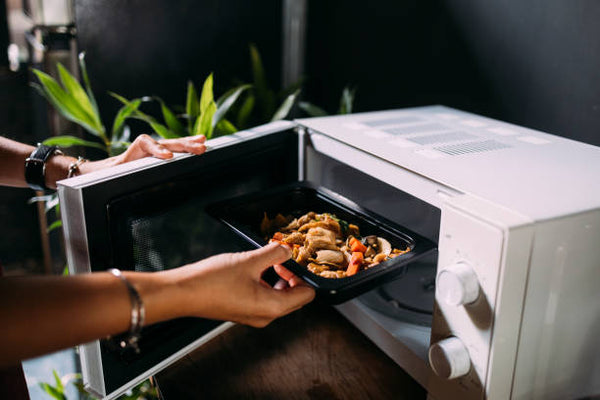How Many Amps Does a Microwave Use?
A typical household microwave might use around 7.5 amps. However, larger microwaves (like those over 1,200 watts) can draw more, around 10-15 amps.
This is because most household microwaves used in kitchens across the United States are in the 600-1,200 watt range.
The amperage a microwave oven uses can depend on its size and power. Here's a general guide:
- Compact Microwaves (600-800 Watts) typically require 5 amps.
- Midsize Microwaves (800-1,200 Watts) generally need 10 amps.
- Full-Size Microwaves (1,200-1,800 Watts) are approximately 15 amps.
- Commercial Microwaves (1,800-2,200 Watts or more can require 20 amps or more.

Can I run a microwave on a 15 amp circuit or a 20-amp circuit?
Depending on the wattage, a microwave can run on both a 15-amp circuit and a 20-amp circuit. Microwaves up to about 1,200 watts can run on a 15-amp circuit. If the microwave is above 1,200 watts, a 20-amp circuit is recommended.
Naturally, you should calculate the total load of all appliances to determine the right circuit for your microwave. The type of circuit required for a microwave is a 120-volt grounded branch circuit with a 3-prong grounding.
Another common question is whether a microwave requires a dedicated circuit. Compact and midsize microwaves usually do not require a dedicated circuit. All you have to do with them is correctly calculate the Over-the-range (OTR) microwaves installed above the cooktop or range should always have a dedicated circuit because of high power consumption, as do all industrial microwaves.
Calculating the formula for microwave power consumption
On average, most household microwaves used in kitchens across the United States are 600-1,200 watt.
Using Ohm's Law, where Power (P) is equal to Voltage (V) times Current (I), or P=VI, we can estimate the average current draw. In the U.S., the standard voltage in household electrical outlets is 120 volts.
So, taking a mid-range power level of 900 watts as an average:
I= P/V
I = 900 W/ 120 V
I= 120V/ 900W = 7.5A
I=7.5A
Thus, on average, a typical household microwave might use around 7.5 amps. However, larger microwaves (like those over 1,200 watts) can draw more, around 10-15 amps due to having higher wattage.
Types of cables used in microwave ovens
- Microwave ovens use a combination of various external and internal cables. It comes with its three-conductor power cord terminated in a three-prong plug that is designed to handle at least 13-15 amps.
- What makes microwaves unique compared to other home appliances is that inside the microwave, there's a high-voltage cable that connects the secondary coil of the high-voltage transformer to the magnetron, which produces the microwaves. This cable is heavily insulated due to the high voltages it carries (typically 2,000 to 5,000 volts).
- The internal wiring of a microwave oven is composed of smaller gauge color-coded PVC insulated wires that connect the internals of a microwave, like the turntable motor, fans, and control circuits. These are small-gauged wires, usually sized between 18 AWG and 22 AWG. The internal wiring also includes thermal sensor wires.
- The household wiring leading up to the electrical outlet where the microwave is plugged in is typically NM-B in size 14/2 or 12/2 with a ground wire.
- If you consider repairing a microwave, using general-purpose wiring is not recommended because of how specific and unique the structure of a microwave oven is. You should only use cables designated explicitly for a microwave. Moreover, repairing a microwave requires help from a professional electrician because of the dangers associated with high-voltage cables found inside microwave ovens.
- If you are searching for a cable replacement for your microwave, make sure not to coincidentally purchase a microwave coaxial cable that are used for RF (radio frequency) and microwave communications applications. These cables have nothing to do with household microwave ovens.


















